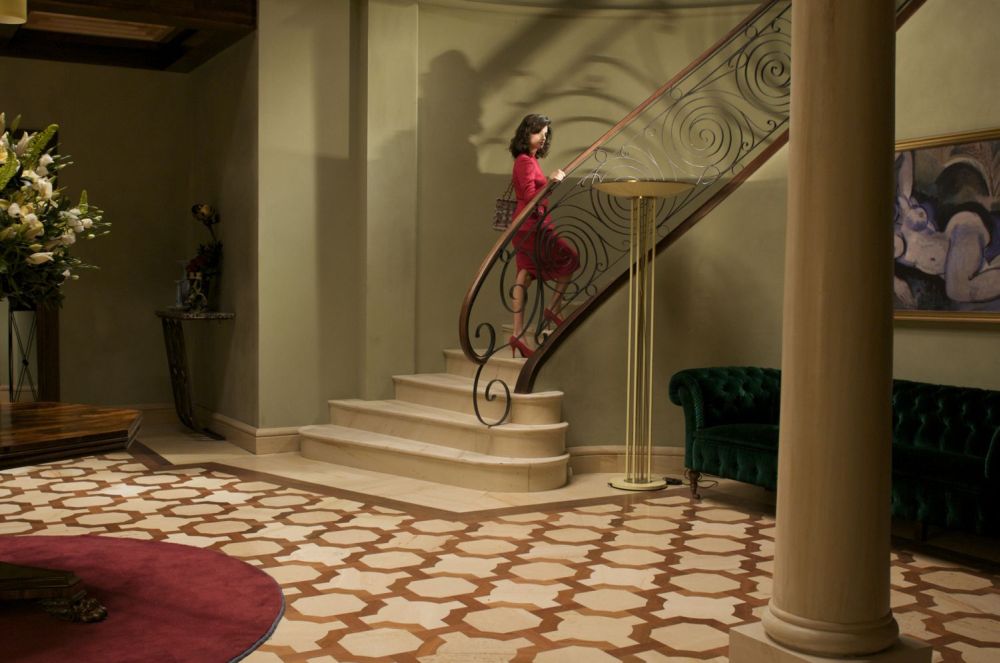Smash Cut (Lee Demarbre, 2009)
*** (A Must-See)

Lee Demarbre’s
Smash Cut, from a screenplay by Ian Driscoll, is an entertaining Ottawa gore film which just had its world premiere Saturday July 18th in Montreal at the Fantasia Film Festival. Both dark and jovial, the plot follows a local filmmaker Able Whitman (David Hess), acting as a surrogate for Lee Demarbre, and its concerns are the inconveniences and compromise that filmmakers creating a collaborative art have to deal with.
The film starts off with Herschell Gordon Lewis, a low-budget gore filmmaker who spawned the genre in the 1960s, warning the viewers “that filmmaking is a blood sport” and that the content of the film is sure to shock. Herschell Gordon Lewis films
Blood Feast (1963),
Color Me Blood Red (1965), and
The Gore Gore Girls (1972) were some direct influences on the film . His films were filled with gruesome murders, evisceration, and half-clad women victims.
Blood Feast starred Connie Mason, from the centerfold of playboy magazine, which is now being paralleled with Sasha Grey who comes from the adult entertainment industry. But his style was invisible, with very little camera movement and a texture that resembled b-exploitation-movies of the era, unprofessional acting, implausible shlock stories, always bright lighting which consisted of a bursting comic-book color palette with flashy hues of blue, red, pink and orange, and moods which were more fun than morbid.
Smash Cut's camera work, by the cinematographers Jean-Denis Ménard and Karl Roeder, is intensely modern, it was shot on a high resolution RED digital camera, with steady cam shots bringing you into the action, close-ups on the dismantlement’s, intricate long shots as well as a mixing up of medias including shots from the perspective of the cameras view-finder, and a short interposition of a monochromatic silent film. The original music, and sound mixing, by Micheal Dubue creates a mood of eeriness and suspence. One scene that stays in mind occurs when the camera follows Able Whitman from his car arriving at the Bytowne Cinema on Rideau Street, past the posters, one of
The Dead Sleep Easy (Lee Demarbre, 2007), up the marquee, through a window, and into the projection booth.
Smash cut begins with Abel Whitman presenting his lastest picture, the audience pans the film, denounces its artificiality of a detached eye-ball. For his next picture, Abel, will remove the eyes of a victim with a medical knife, in a sequence that is even more nauseating then the eye slicing in
Un Chien Andalou. Then he goes to a bar and drinks his problems away, gets a dance from a stripper named Gigi (Jennilee Murray), and then leaves with her. Driving home, she surprises him by returning her regular fee, but an unsuspecting incoming automobile sidetracks him off of the street where he hits a tree. She dies. The accidental murder of the women, a fleeting career, and frustration towards an audience that is not receptive to his work brings him to a nervous breakdown. What unfolds is a murderous escapade; he has now an insatiable desire to murder and to use the corpses in his film. As precocious as the Nietzscheans in Alfred Hitchcock’s
Rope (1948). The body parts make everything, well the gore at least, in his new film of a murdering toy all the more realistic and believable, allowing him to get more grants, a major distribution, which pleased his producer Philip Farmsworth Jr. (Michael Berryman), and awe from his peers.
One unnoted dept
Smash Cut might owe would be too Warren Beatty’s
Bulworth (1998). Abel Whitman’s nervous breakdown and then ravage lunacy parallels the plight of Sen. Jay Billington Bulworth where after realizing his vanishing presence as a political candidate he decides put a contract out on himself and then starts to blurt out truth’s denouncing the system hypocrisies. With every prod to the current political organization, the more powerful his following becomes. Which is similar to the aggrandizing of Abel as his film is consecutively improving.
The only potential problem the film poses is it lack of a message. What does this film have to say about the world we live in? Able Whitman while in a room preparing to get government funds is asked by an artist what kind of film is he making, her answer was that she will be using the money to decry the passivity that arise from televisions, and then he tells her his film will be a sojourn in the macabre, then knocks her out, slowly tortures her, depletes her blood into a canister and finally lashes it onto the star of his new film April Carson (Sasha Grey). April is Gigi’s sister, the murdered stripper, who is on a editorial pursuit, along with a investigator Isaac Beaumonde (Jesse Buck), to relocate her.
Ian Driscoll script has Shakespearian touches, in particular Hamlet which Abel Whitman comments as being as precursor horror film. The investigator Isaac eventually catches on to what Abel has been doing and puts on a a re-enactment of Abel Whitmans murder of the movie critic Gretchen Gregorski (Guen Douglas) paralleling the same device Hamlet uses on Claudius, though comically done with paper masks and a pretend stabbing with a knife that never makes contact.
Many simple pleasures that arise from the film are the locations and people, starting off with the Car Wash on Catherine Street, the repertoire cinema’s Bytowne and the Mayfair, the National Art Gallery of Canada setting, and alongside the Rideau Canal. This viewer’s only problem arose when Abel Whitman decides to murder one of the film’s producers with a Harpoon, he is asked where he got the Harpoon, and before plummeting him with it, he answers at the Harpoon store. For as this lifetime Ottawa, Ontario, resident knows there are no Harpoon stores here! As well there are a few cameos of a few friends that would have no other opportunity to be immortalities on film including Layla Brown, Lesley Marsland (both from the Bytowne Cinema) and Michael Dubue (In the band the Hilotrons, and Mayfair Theatre) as well as a few Ottawa Famous figures including Guen Douglas (Planet Ink Studios), Jennilee Murray and Phil Caracas (The
Harry Knuckles trilogy, and Bytowne Cinema).
The communal midnight screening experience was very lively. Including a waiting line that went around the corner, a practically packed house at the Théâtre Hall at Concordia (1455 de Maisonneuve O.), loud cheers, burst of laughter, comments, and a receptive question and answer period. With popcorn, and soda everyone was in the mood for a good time. The Q & A session afterwards was very enlightening with Lee Demarbre, Ian Driscoll, Sasha Grey and David Hess. Lee Demarbre was his usual enthusiastic self, Sasha Grey, who is 21 years old, (her next film is Steven Soderbergh
The Girlfriend Experience) seemed rather reserved when she was not speaking, and finally the Sanford Meisner protégé and acting veteran, David Hess (
The Last Hill on the Left) seems to exert both levity and the knowledge of old age. All cohorts played off of each other like a perfect pitch tune.
During the Q & A session, David Hess contextualized the midnight movie phenomenon. He commented on how back then, New York City in the 1960’s, nobody knew who was directing the pictures. When an audience would go to see a midnight movie, their usual routine for the night would involve getting high off marijuana and then watch a lurid seedy picture. The director of the picture remained unanimous, and even though he knew personally Hershell Gordon Levis, he commented on how he still had to be re-introduced to him later through his films.
The conditions were both open and social as Lee Demarbre seemed to be an incarnation of what it means to be a film enthusiast for the people of Ottawa (
Full disclosure: I am an avid enjoyer of Lee Demarbre films and with Rachel Leblanc I have made a short documentary on him, you can find it if you youtube; cult fiction lee demarbre). His flamboyant repertoire programming at the Mayfair Theatre (1074 Bank Street) got many local residents to make the pilgrimage to go see the world premiere of
Smash Cut in Montreal. When the questions started, some of them were from extras from the movie, others thanking him for the great movies playing at the cinema and wannabe screenwriters asking him for advice. Make sure to go see this one when it gets its local release because this film is well worth checking out.-David Davidson
(Fantasia Film Festival, 1455 de Maisonneuve O., Théâtre Hall Concordia, July 19th, 12:15AM)


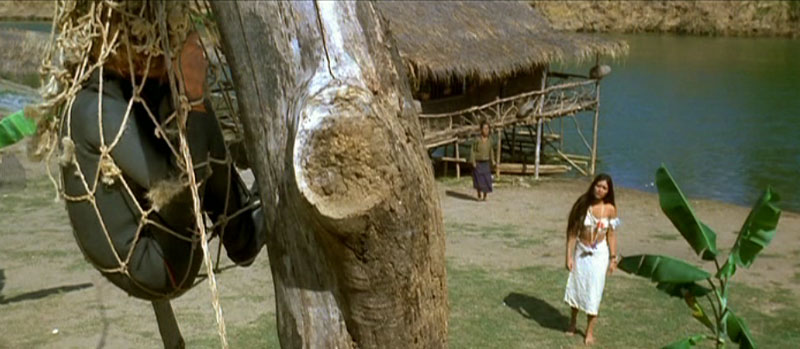

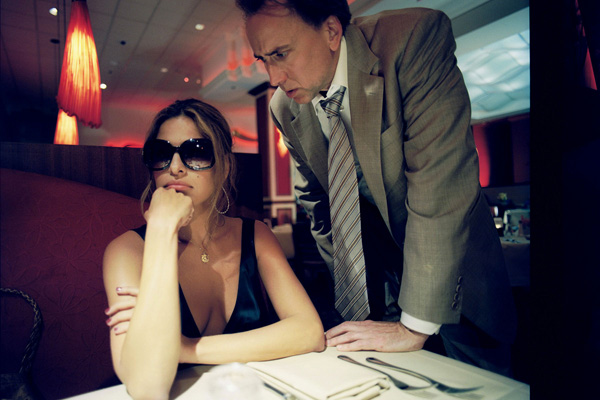









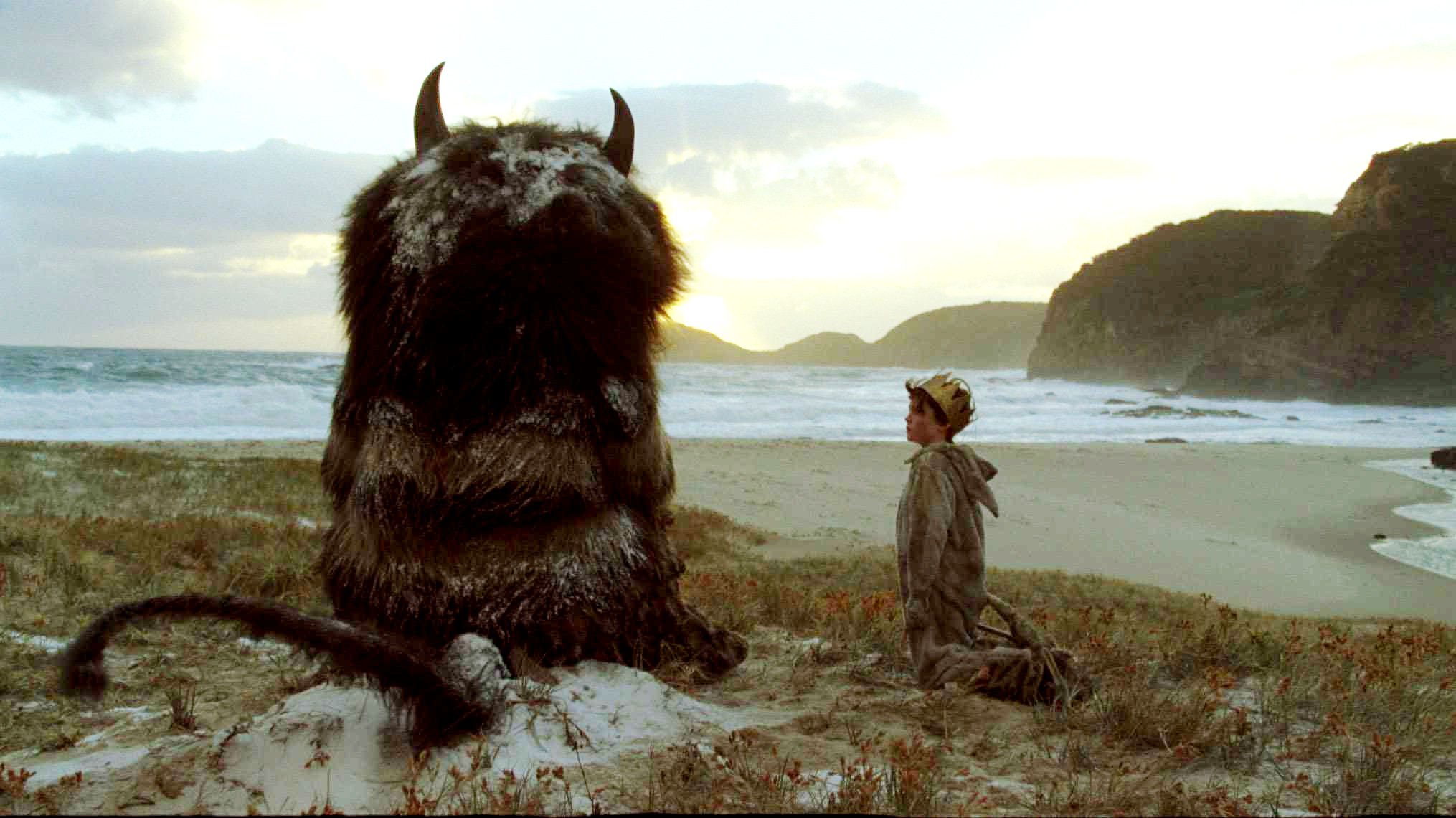

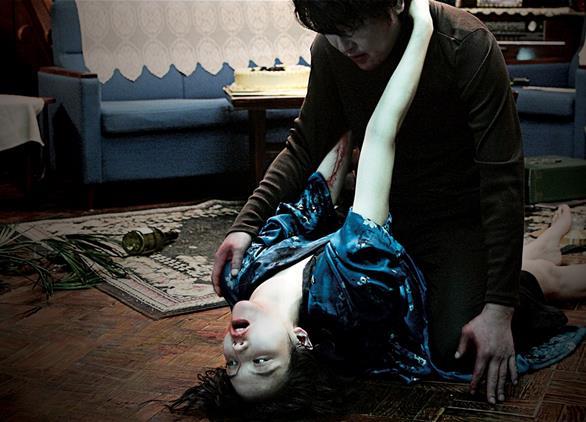




_04.jpg)




